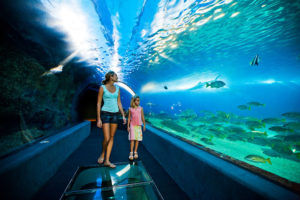Get this: Whales didn’t always live in the oceans.
Researchers believe whales descended from terrestrial creatures some 65 million years ago and finally adapted to full-time survival in the vast and trackless sea.
Trackless, that is, until whale hunters came along.
There was a time when Maui was known as the center of the Pacific whaling industry.
In the mid-1800s, ships carrying whale hunters came and went from harbors like Lahaina.
Today, tourists fill the ocean-going vessels and whales are fair game only to observe.
Whaler’s Village Fine Shops & Restaurants in Ka’anapali is home to a museum that recounts the history of Lahaina’s whaling era from 1825 through 1860.
Here you will find a large collection of harpoons, sea chests, ship’s logs, sailor’s journals, tools and artifacts as well as a large-scale model of a whaling ship and an extensive display of antique and modern scrimshaw art.
A recently refurbished theater features continuously playing whale and ocean-themed movies. One of the movies follows whales as they migrate from Alaska to the Hawaiian Islands and contains some spectacular footage from birthing to adulthood. Admission is free.
In Kihei, the Hawaiian Islands Humpback Whale National Marine Sanctuary operates an education center that features displays and research material on humpbacks.
The sanctuary, established in 1997, was created to protect the endangered whales. Its jurisdiction spreads over 1,400 square miles of coastal waters adjacent to the main Hawaiian Islands. The education center, located at 726 S. Kihei Rd next to Kalepolepo County Park, is open from 10 a.m. to 3 p.m. Monday through Friday. Parking and admission are free. The Whale Discovery Center at the Maui Ocean Center is another excellent source of information about humpbacks.






